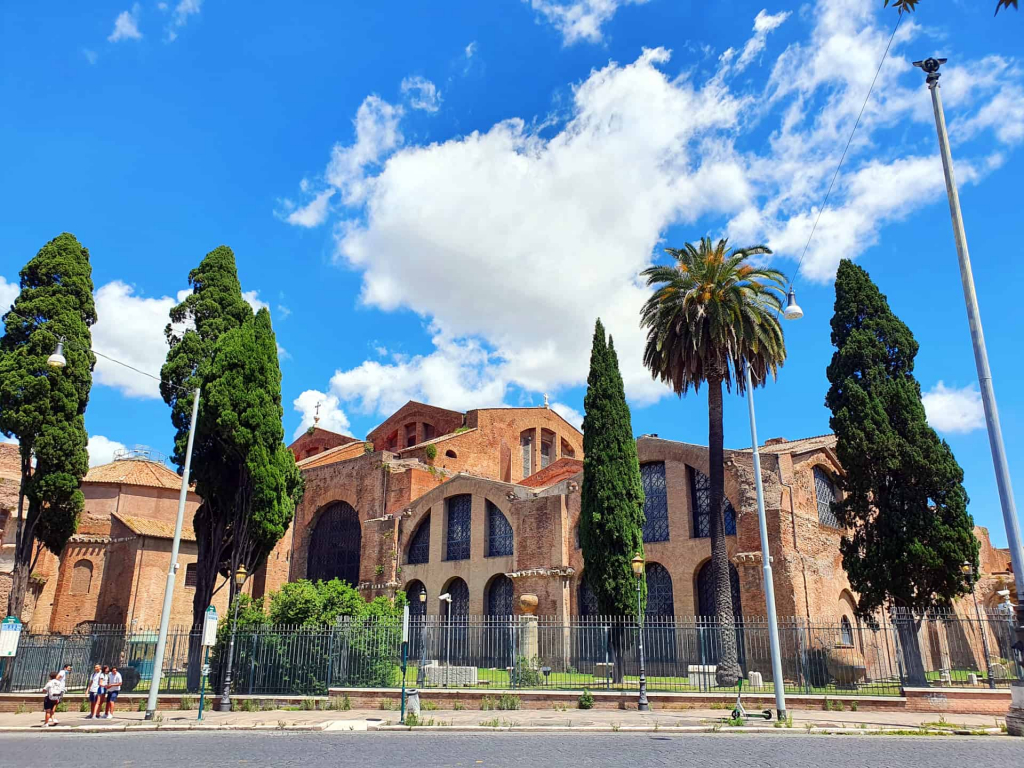
Baths of Diocletian
The Terme di Diocleziano, or Baths of Diocletian, is an impressive ancient Roman bath complex that was built in the 3rd century AD. It was the largest public bath in Rome, measuring 376 × 361 m, and could accommodate up to 3,000 people at once. Today, visitors can explore the ruins of this magnificent structure and get a glimpse into the daily life of ancient Romans.
They were commissioned during the reign of Roman Emperor Diocletian and was allegedly built by 40,000 slaves from 298-306. It was designed to be the largest and most impressive public bath in Rome. The complex included hot and cold pools, saunas, exercise rooms, and even a library. The water supply was provided by the Acqua Marcia.
The Baths of Diocletian are a true masterpiece of ancient Roman architecture and design. The complex was built on a grand scale, with massive columns, soaring arches, and intricate mosaics. The baths were designed to be both functional and beautiful, with a complex system of heating and plumbing that allowed for a variety of different bathing experiences. The library, one of the most impressive features of the complex, was a testament to the importance of education and learning in ancient Rome. Many of these works of art have been preserved and can still be seen today, providing a glimpse into artistic and cultural achievements.
The baths were restored during the 5th century. After the Goths destroyed the Roman aqueducts in 537, the baths fell into disrepair and served as a quarry. In the 16th century, the complex was converted into a church. The Tepidarium and the Hall of the Frigidarium were used by Michelangelo to build the Church of Santa Maria degli Angeli e Martiri.
Today a part of it belongs to the Museo Nazionale Romano, where numerous Roman statues are exhibited. The churches Santa Maria degli Angeli e Martiri and San Bernardo alle Terme are still part of the site.

Terme di Diocleziano / Baths of Diocletian (Rome)

Skip-the-Line tickets for the Baths of Diocletian / Terme di Diocleziano
Opening hours:
Tuesday – Friday: 14:00 – 19:45
Saturday – Sunday: 10:30 – 19:45
Buy your tickets here and skip the line!


Treasures of Rome – Rome Guided Tours
Roberto Alois Lautenschlager Kung
[email protected]
Partita IVA: 17002181000
“ROMA AETERNA EST”
Rome is eternal – (Albius Tibullus)





